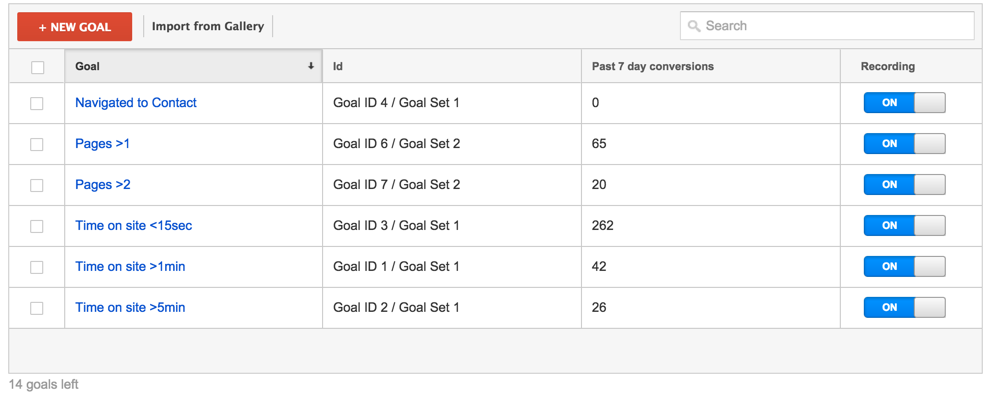Understanding What Data Is Google Analytics Goals Unable to Track
Understanding What Data Is Google Analytics Goals Unable to Track
Blog Article
Introducing the Blind Spots: Understanding What Google Analytics Goals Can not Measure
In the world of digital analytics, Google Analytics stands as a powerful device for monitoring and examining online user communications. Understanding what Google Analytics objectives can not gauge is critical for obtaining an extensive view of customer actions and interaction.
User Behavior on External Operatings Systems
Comprehending just how users communicate on outside systems is important for optimizing online approaches. External platforms, such as social media networks, reference web sites, and online forums, play a significant duty in driving web traffic to a company's internet site. By analyzing customer habits on these systems, businesses can obtain beneficial understandings right into the efficiency of their advertising initiatives and the preferences of their target audience.
One secret element of user behavior on outside platforms is the referral resource. By tracking where the users are originating from, services can determine which platforms are driving the most traffic to their site. This details can assist firms designate their sources extra efficiently, concentrating on the platforms that produce the most effective results.

Offline Interactions and conversions
Evaluating customer habits on external platforms gives valuable insights into on-line methods; however, thinking about offline conversions and communications is just as critical for a thorough understanding of a company's total performance. While Google Analytics succeeds at tracking on the internet interactions, it falls brief in capturing the total consumer trip that often consists of offline touchpoints. Offline conversions, such as in-store purchases or phone inquiries, play a substantial duty in several companies' success. Disregarding these interactions can lead to an altered view of the effectiveness of advertising projects and general organization performance.

Acknowledgment Beyond Last Click
When delving into the world of digital marketing analytics, it ends up being vital to look beyond the single touchpoint of the last click for a much more comprehensive understanding of attribution. While Google Analytics gives valuable understandings into customer habits, counting exclusively on last-click attribution can be limiting - what data is google analytics goals unable to track. Acknowledgment models that go beyond the last click use a much more nuanced sight of the client journey, considering all the touchpoints that bring about a conversion
Attribution beyond click for more info the last click permits online marketers to designate credit rating to different communications along the conversion path, giving a clearer photo of the effectiveness of various advertising his explanation channels. By checking out multi-touch attribution versions such as direct, time decay, or position-based attribution, organizations can better allocate their marketing budgets and maximize their methods for optimal effect.
Comprehending the influence of each touchpoint in the conversion process is essential for making notified decisions and taking full advantage of ROI. By welcoming attribution past the last click, organizations can acquire much deeper understandings right into customer actions and customize their advertising and marketing initiatives more successfully.
Cross-Device and Cross-Browser Tracking

Likewise, cross-browser monitoring complements cross-device monitoring by catching individual habits as they switch over in between different internet internet browsers. Understanding just how individuals connect with web sites on different internet browsers can aid marketing professionals maximize their on the internet experiences to make sure consistency and performance across various systems.
Qualitative Data and Individual Intent
Understanding customer intent via qualitative information analysis is essential for establishing targeted electronic advertising strategies that resonate with the needs and choices of the target market. Qualitative information supplies understandings into the 'why' behind customer activities, shedding light on motivations, feelings, and choices that measurable information alone can not record. By analyzing user comments, remarks, and communications, online marketers can discover beneficial information regarding individual intent, enabling them to tailor their messaging, web content, and offerings to better align with what their target market is seeking.
Qualitative information additionally assists in understanding the context in which individuals involve with a site or application. This contextual understanding makes it possible for online marketers to produce more customized and appropriate experiences, ultimately driving higher engagement and conversion rates. By diving right into customer intent via qualitative data analysis, businesses can get a deeper understanding of their target audience, leading to a lot more effective advertising approaches that satisfy customers' assumptions and needs.
Conclusion
Finally, Google Analytics goals have restrictions in determining customer behavior on outside systems, offline conversions, acknowledgment beyond last click, cross-device and cross-browser tracking, and qualitative information associated with individual intent. what data is google analytics goals unable to track. It is important for organizations to be mindful of these unseen areas in order to supplement their information evaluation with other tools and approaches to obtain a much more detailed understanding of their go to the website target market and boost their overall digital advertising and marketing approaches
By assessing user behavior on these platforms, services can get valuable insights into the performance of their advertising and marketing efforts and the choices of their target audience.
Examining individual behavior on outside platforms gives beneficial understandings into on the internet techniques; nonetheless, considering offline conversions and communications is just as important for a detailed understanding of a firm's total performance.In digital marketing analytics, moving beyond last-click acknowledgment to explore cross-device and cross-browser tracking is crucial for obtaining an all natural understanding of user communications throughout different systems and devices. By examining user responses, comments, and interactions, marketers can discover valuable details about user intent, allowing them to tailor their messaging, content, and offerings to much better align with what their target market is seeking.
By diving right into user intent with qualitative data analysis, businesses can acquire a deeper understanding of their target audience, leading to much more reliable advertising and marketing approaches that satisfy users' expectations and requirements.
Report this page